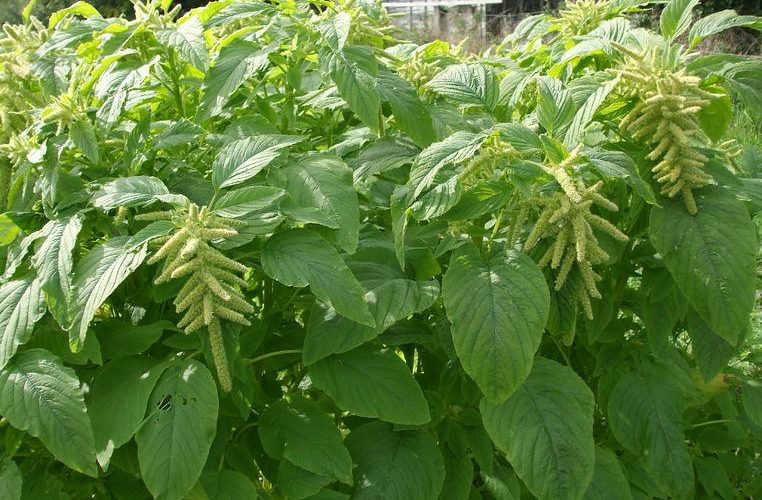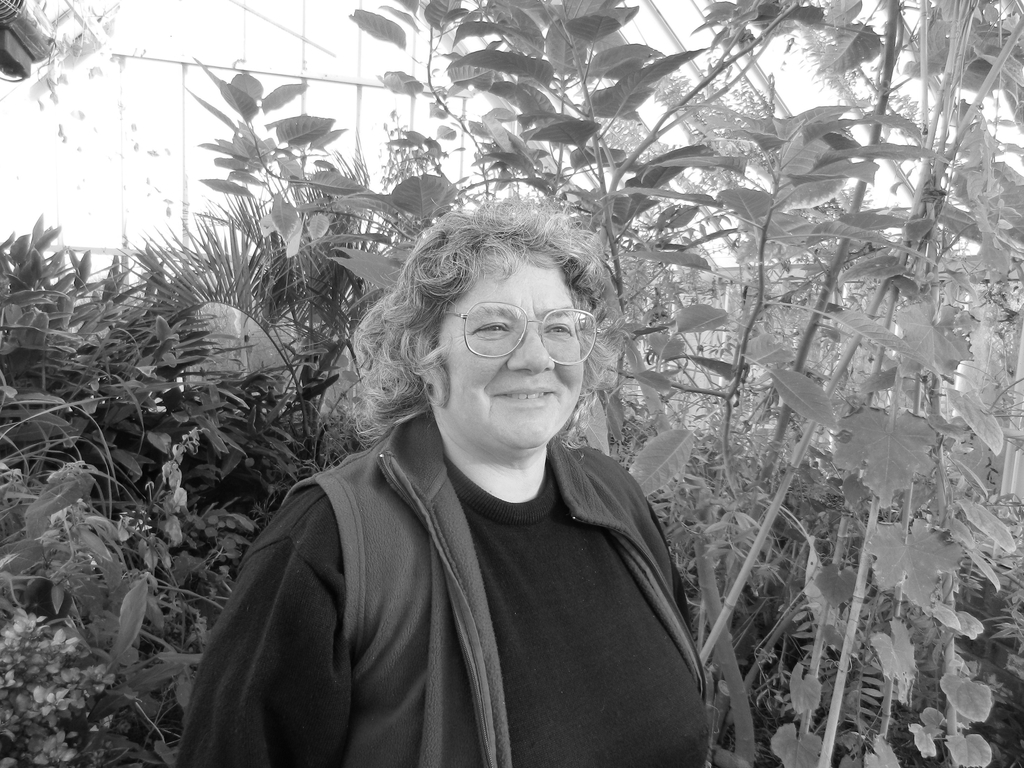Growing under the radar
Recognising the value of non-traditional crops in the UK
Crops not traditionally grown in the UK could play a valuable part in our food production system; contributing to diversity, food security and nutrition. When I first signed up for the Sowing New Seeds (SNS) Project with Anton Rosenfeld I didn’t know quite what I’d be letting myself in for! It turned out to be a mixture of exploring inner city streets looking for elusive allotment gates tucked behind carpet stores, synagogues and scrap-metal yards, meeting growers from almost every continent except Antarctica, and trying to replicate their success in what became a series of very crowded polytunnels… all in an incredibly short time.
Opportunities for growers
During my work previously on Leicester allotments I’d encountered a number of unusual crops being grown by elderly immigrants, and wanted to find out more before they and their seeds died off. SNS was the culmination of this curiosity, being dedicated to finding out exactly what was being grown across the Midlands from plants or seed exchanged between neighbouring plot holders, often originating many generations ago from family farms in Asia, Africa or the Caribbean. We talked to the seed holders, and with their consent and kind donations, trialled as many as we could of these crops, with a selection of overseas commercial varieties for comparison, finally bulking up seed numbers to add the best to the Heritage Seed Library to conserve them for posterity.
The challenges faced by these growers were many; often unpromising sites (if they could find land at all), limited space and water supplies with even less access to heated growing conditions early in the season, and lack of knowledge of the English climate and the capacity of seed from the tropics to respond to our fluctuating British day-length.
Many years of dedicated experimentation went into finding solutions, including growing cucurbits across a football net strung between two back garden fences to allow children and washing to co-exist on the lawn below; making hotbeds for sweet potatoes using manure from a local riding school; an ingenious array of old radiators arranged along a south facing wall supplying underground pipes to warm a cold-frame below; a log-burning heater improvised from a large propane bottle to keep frost out of a polytunnel with a suitably insulated chimney; and amazing structures incorporating everything from car windscreens to double glazing units to prolong the growing season.
The invention and dedication devoted to being able to grow ‘something from home’ cannot be underestimated, and I feel very proud to have met so many indefatigable and imaginative people.
Seed we obtained which had been self-saved by these growers almost always performed to far higher standards than commercial seed, which was not widely available, if offered at all. A field trial of Amaranthus showed this to dramatic effect, with almost all UK commercial varieties barely growing above ankle height, if at all, while allotment saved stock romped away. Robinson’s (of mammoth onion fame) and Real Seeds proved the only exceptions to a short list of UK suppliers of disappointing seeds.
Commercial potential?
Among our successes were dudi or calabash (Lagenaria sicceria) which was being grown by Indians, Portuguese, Eastern Europeans and Afro-Caribbeans (who often ate the leaves as well as the fruits). This certainly deserves to be more widely known. A spectacularly energetic climber, best described as a pumpkin on steroids, dudi has greyish furry foliage and pure white flowers which open at night. The flowers require hand pollination to obtain fertile seed, although plants happily set parthenocarpic fruit. It took poor Anton some time to realise that the pollen was still viable on dull days in daylight, so he didn’t have to pushbike into Ryton after 9pm to act as an artificial bee!
The plants we came across usually had long fruits resembling pale green baseball bats in both size and texture, and were very successful in sheltered sites outdoors or better still, in a tunnel. One of the largest types came from Slovenia, producing fruit over 2m long. Dudi is now being retailed by several major supermarkets in larger cities, but there would probably be a more lucrative market for the fresh young shoots, as these are unobtainable in most areas. Among the most successful growers of dudi we encountered was Lutfun Hussain of Spitalfields City Farm, whose beautifully neat, ultra-productive tunnels put ours to shame (picture above depicts Lutfun’s dudis – a speckled Bangladeshi variety rather than the traditional pale green type). Her seed was home-saved for years and showed much improvement in both hardiness, early cropping and vigour compared with commercial Indian or Bangladeshi seed packets being sold openly in nearby Brick Lane supermarkets.
Another unknown vegetable was the lablab bean, (Lablab purpureus, syn Dolichos purpureus) which has a multitude of names – sem, hyacinth bean, liva, papri or val – and is almost exclusive to the Indian subcontinent. Cultivated for over 3,500 years, lablab comes in many forms but is always recognisable by the distinctive textured edge to the ‘hinge’ side of the pod, which can be broad, flat and mangetout-like or small, lumpy and tightly curled. Seeds are equally recognisable with a brilliant white hilum extending halfway round the edge of the seed which can be white, cream, grey, black, red or mottled. Plants can climb (anything up to 3m/15ft) or be kneehigh, with attractive whorls of flower similar to a runner-bean but in many colours; from purple to lilac through to yellow, cream and white. The earliest cultivar we came across was called Ying’s, after the grower, with beautiful faintly-scented lilac flowers and stunning lime-green pods with a purple edge (picture above depicts Ying’s lablab showing distinctive wrinkled edge to pod and beautiful lilac-pink flowers).
Yet another vegetable which was going viral under the radar was African kale. Unusual in its ability to be propagated vegetatively, and rarely flowering, this white-flowered brassica is reliably perennial and hardy to minus 10˚C. Grown like a hedge, leaves can be plucked at any time, and despite being prone to all the usual brassica problems its innate vigour seems to overcome almost any pest or disease. Cuttings moved rapidly across the country with and without our help, and hopefully this now has a strong, if unofficial, hold in allotment sites across the UK.
African kale growing at Ryton Gardens
Food for thought…
With the climate altering dramatically, we need to expand the capability and range of our crops more than ever before. Our tastes have changed dramatically in my lifetime, so why not our vegetables?
Sally Cunningham has worked closely with Garden Organic (GO) / HDRA for nearly 20 years. She writes: “A lifelong professional gardener, I started in the late 1980s when amenity growing was much more chemical based – the ‘simazine border’ was being proclaimed as the latest new labour saving device and embraced by local councils following Thatcher’s spending cuts. I’ve always been fascinated by nature and this seemed so wrong to me, so organic gardening was the natural path to try to follow whenever I could.
While I’ve worked in horticulture I’ve always tried to find out about the creatures I come across: I’ve been a wildlife recorder for most of my adult life, although there are still many wee beasties I don’t recognise! Other interests include growing on my own garden and allotment whenever I have the time (sadly not often enough right now), then cooking and eating what I grow, which is probably why I’m one of the rounder members of staff…One of the most important projects I’ve completed with GO was Sowing New Seeds, and if I can be acknowledged to have introduced lablabs to a wider audience I’ll be very happy…”
Learn more:
Interested in exploring more regarding increasing crop diversity and growing less traditional crops? Have a look at:
- ‘The value of non-traditional crops‘ (where you can find out more Garden Organic’s ‘Sowing New Seeds’ project and access the useful resources)
- ‘Underutilised Crops‘ (tells you about the DIVERSIFOOD project and the potential part it could play in future farming; increasing crop diversity and creating local high quality food systems)
- ‘Novel vegetables: Observations on growing a range of tropical crops‘ (a report providing some useful insights from some trials run in West Cornwall)
(Editor’s Note)
Header image: Amaranthus ‘Mrs McGhie.’ Photo credits: Picture of Sally – Anton Rosenfeld, all others – Sally Cunningham (CC BY-ND)


